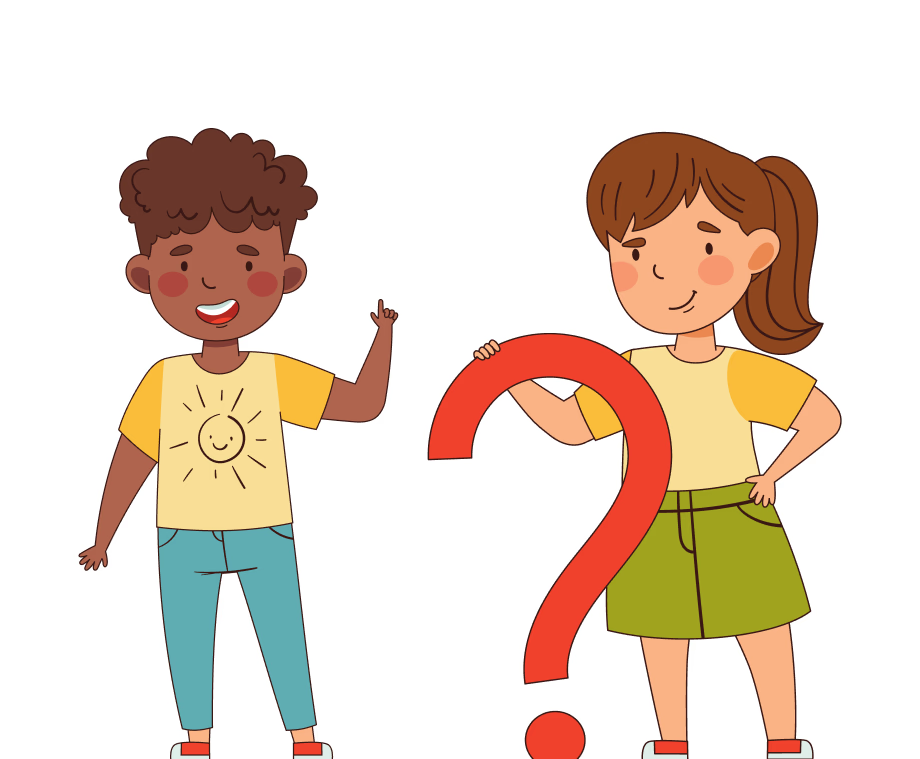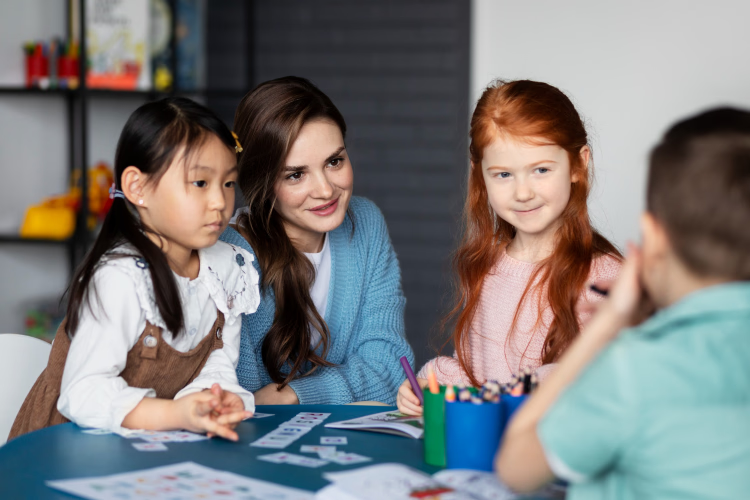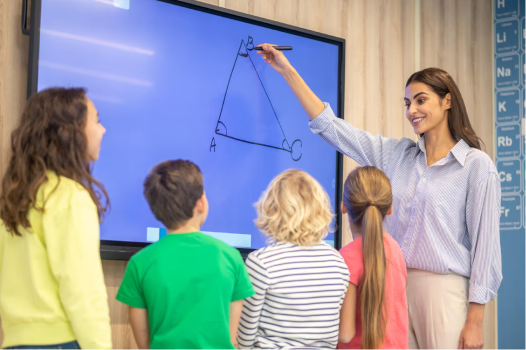Picture this:
It’s your first day teaching a lively class. Sofia, the little detective, keeps asking, “Why?” while Max, the hands-on learner, lights up when there’s something to explore. You quickly realize that a single approach won’t work for both of them.
This is where Child Development and Pedagogy come in. They help you understand each child’s unique learning style. With this knowledge, you can adapt your teaching—sharing stories to captivate Sofia’s curiosity or creating activities to match Max’s energy. It’s about finding ways to make learning engaging for every child.
By understanding each child's developmental stage, you can adjust your teaching to meet them where they are. For Sofia, a more profound explanation fuels her curiosity, while for Max, a hands-on experiment sparks his interest. Understanding the relationship between child development and pedagogy is vital to ensuring you meet each student's unique needs.
In this blog, we'll cover:
- The Interplay Between Developmental Stages and Pedagogical Strategies
- Practical Tips for Implementing Child Development-Informed Pedagogy
- Conclusion
As you begin to implement these strategies, it's essential to understand how developmental stages influence learning.
Now, let's explore the interplay between developmental stages and pedagogical strategies and how they can help guide your teaching approach.
As teachers, understanding how students learn at each stage helps us teach more effectively. Here’s a quick guide to help you choose the best activities for different age groups:
For younger children, focus on hands-on, sensory-based learning. Use games, visual aids, and stories to help them engage actively and make sense of new ideas. Try simple experiments, craft projects, or storytelling sessions to make lessons memorable.
For teenagers, their thinking becomes more abstract and analytical. Encourage debates, problem-solving activities, and projects where they can apply concepts to real-world situations. This approach keeps them engaged and deepens their critical thinking skills.
By tailoring activities to each stage, you’ll create a classroom that feels relevant, exciting, and responsive to every student’s developmental needs.
If you’re looking for guidance, read "The Absorbent Mind" by Maria Montessoria which is a great Child Development and Pedagogy book, make Child Development and Pedagogy notes are perfect for a quick refresher before planning lessons. Knowing these stages lets you tailor your teaching to meet their needs!
Here are some practical tips that can help you align your teaching with the needs of child development:
A great way to connect with your students is by observing their behavior and reactions in class. Pay attention to patterns—what grabs their attention, what challenges them, and what excites them.
To keep track of these insights, start building your own Child Development and Pedagogy notes. These notes will be a handy reference to help you adjust your teaching over time.
Regular reflection is key. By reviewing your observations and adapting your approach, you’ll be better equipped to meet your students’ needs and help them thrive in the classroom. It’s a small habit with a big impact!
When designing lesson plans, think of them as a flexible roadmap. Sure, you want to have a clear structure but don’t be afraid to adjust on the fly based on how your students are engaging. Some days they’ll be full of energy and ready to dive deep, and other days, they might need a different approach.
Having a framework in place is super helpful, but the key is adaptability. You can find some great resources over the internet, like a Child Development and Pedagogy pdf, that offer templates and examples to guide you. These can serve as a starting point, but always be ready to tweak things as you go.
This way, you’re not just following a script—you’re actively responding to the energy and needs of your students, making each lesson feel fresh and engaging!
All kids learn differently, so why not make your lessons as dynamic as they are? Adding visuals, hands-on activities, and demonstrations helps cater to all kinds of learning styles. Plus, using real-world examples makes everything feel more relevant and fun!
If you're wondering how to pull it all together, refer back to the Child Development and Pedagogy syllabus you studied during your teacher training. It’s packed with ideas to help you design lessons that truly connect with your students. By mixing up your approach, you'll keep them engaged and help those concepts stick!
Kids absolutely love stories! So why not use them to explain complex ideas in a fun and relatable way? Whether it’s a simple tale or a real-life example, storytelling grabs their attention and makes learning more enjoyable. It helps break down tough concepts into something they can easily understand.
But it’s not just about keeping them engaged. Storytelling also creates an emotional connection to the material, making it more memorable. When students can connect with what they’re learning on a deeper level, it sticks with them long after the lesson is over.
Collaborative activities are a game changer in the classroom! Not only do they teach kids essential social skills, but they also give them the chance to learn from each other. This is a perfect example of the relationship between Child Development and Pedagogy—when kids work together, they develop critical thinking, communication, and empathy.
Encouraging teamwork doesn’t just improve their academic skills; it also creates a sense of community in the classroom. When students feel like they’re part of a team, it builds a safer, more supportive space where everyone feels comfortable sharing and learning.
Simple reflective exercises, like asking “What did I learn today?” can be a game-changer for students! It gives them a chance to pause, process what they’ve learned, and really think about how it all fits together. This works especially well for middle and high schoolers, who are starting to think more critically about their learning.
These little moments of reflection can do more than just check off a box. They help promote self-regulation and metacognitive skills, which are key for lifelong learning. If you're looking for more strategies to incorporate this, refer back to the Child Development and Pedagogy syllabus you completed during your teacher training—it's a great resource for techniques to foster student growth and critical thinking!
Child development isn't just about the brain—it’s about the heart, too! Emotional development plays a huge role in how students learn and grow. Simple tools like daily mood check-ins or journaling can help students express how they’re feeling, making them feel more secure and understood.
When we take the time to recognize and validate their emotions, it creates a classroom atmosphere where students feel safe and supported. This emotional connection can make a world of difference in how they engage with learning. After all, when students feel good emotionally, they’re more likely to thrive academically!
Parents are such a key part of a child’s development, and getting them involved can really boost a student’s success! Why not host a session to share your Child Development and Pedagogy notes with them? This gives parents a chance to understand the strategies you’re using in the classroom, so they can support their kids at home too.
When teachers and parents work together, it creates a powerful support system for students. It’s all about building that connection between school and home, which helps students thrive in both environments. Plus, when parents feel involved, they’re more likely to actively engage in their child’s learning journey!
In today’s digital age, using educational apps and online resources is a fun way to keep students engaged! There are interactive tools designed for different age groups that make learning exciting.
To get the most out of tech, check out Child Development and Pedagogy pdf resources online—they offer great tools that align with your students' developmental stages. Just make sure your tech choices match your learning objectives for maximum impact. The Child Development and Pedagogy Syllabus is also packed with ideas to help you integrate these tools seamlessly into your lessons!
Staying updated on the latest insights in child development is key to being the best teacher you can be. Whether it’s flipping through the latest Child Development and Pedagogy book editions or attending workshops, these resources can give your approach a fresh boost and open your eyes to new strategies.
If you're looking to deepen your knowledge and refine your teaching methods, check out Suraasa’s Upskilling Courses for Teachers. These courses offer practical, research-backed techniques that cater to diverse learning needs. By blending theory with real-world strategies, Suraasa’s courses help you enhance your teaching approach and make your lessons more student-centered and impactful.
Understanding Child Development and Pedagogy lets you step into your students' shoes, seeing the world from their perspective. By tailoring your teaching strategies to match their developmental stages, you create a more engaging and effective learning environment.
Whether you're using a Child Development and Pedagogy book, Child Development and Pedagogy pdf materials, or Child Development and Pedagogy notes, these resources offer valuable insights to help you keep improving your approach.
Teaching is both a journey and a destination. Each day you spend exploring the relationship between Child Development and Pedagogy strengthens your ability to connect with, inspire, and support young minds.
If you want to deepen your expertise or need guidance on implementing these strategies, consider connecting with a teacher career expert and take the next step in your teaching journey!
















